6 iconic character design moments in the history of Princess Peach
Here are some of the most notable design moments in this character's multi-decade development.

As a classically feminine blonde who loves pink, has a ton of fun hobbies, and is shouldered with some very high expectations based on her oversized visibility, Princess Peach is almost the Barbie of video games. Originally one of the few examples of a woman in a video game, her role has shifted over the decades, growing from a mere damsel in distress (Super Mario Brothers, 1989) to a fully realized character with a game of her own, the upcoming Princess Peach: Showtime!.
While technically not her first title as a lead, Princess Peach: Showtime! is a culmination of the character’s evolution, flanked by the company’s quiet addition of additional women over the years, from Toadette and the ethereal Rosalina to the historic return of Pauline in Super Mario Odyssey, and exhibiting Nintendo’s commitment to the audience’s changing tastes.
In that time, she’s taken up sports, joined a fight club, and made a few stylish pit stops in sidekick territory along the way.
Here are some of the most notable design moments in this character's multi-decade development.

Image via Nintendo, courtesy of Entertainment Weekly.
1. Super Mario Bros. 2: Princess Peach becomes a playable character
Princess Peach’s status as a perpetual side character started fairly early in the series. While in the original Super Mario Bros. she was helpless and nonplayable, in the US version of the sequel, the reskinned Yume Kōjō: Doki Doki Panic, she becomes a part of the group, joining Mario, Luigi and Toad as selectable characters.
This game was also notable for introducing what would become Princess Peach’s signature move, the floating jump, which was inherited from her counterpart in Doki Doki Panic, Lina. Despite its origins in another series, the move can be seen in titles like Super Smash Bros. Melee (where Princess Peach made her debut) and Super Mario Bros. Wonder—where it becomes a power-up available to anyone in the party—to this day.
Princess Peach would, from this point, begin to make small appearances as a selectable character in multiple smaller spin-off games, like Yoshi’s Cookies, Mario Teaches Typing, and more experimental projects like Paper Mario's spiritual predecessor Super Mario RPG: Legend of the Seven Stars.
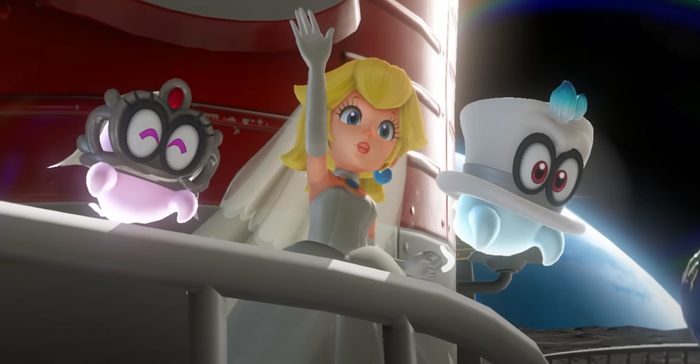
So long, suckas. Image via Nintendo, courtesy of YouTube user ProsafiaGaming.
2. Super Mario Odyssey: Princess Peach rejects Mario romantically
For years, Princess Peach, outside of spin-off games, was depicted in a very specific uniform: a pretty pink gown, a dainty gold crown beset by blue jewels and pink jewels, and long tapered white gloves. In Super Mario Odyssey, however, the underlying, unspoken threat of Bowser’s kidnappings is finally almost fully realized, and Princess Peach spends much of the game in a white wedding dress, accessorized with a talking Tiara, the sister to Mario’s sentient Cappy. The transformation (seen to a lesser extent in Super Paper Mario) is startling, both for its departure from her usual appearance and for what it symbolizes—that there is definitely a romantic component to Bowser’s kidnappings.
Even more startling, though? The closure we get about video game’s most iconic couple. After all, just because she’s wearing the dress doesn’t mean Peach is eager to make the most of her big day. Following her rescue, she shuts Mario down, rejecting his marriage proposal and definitively ending any speculation about their relationship for good.
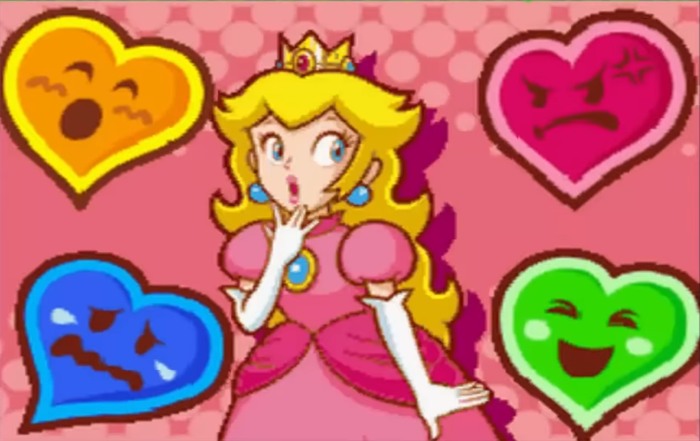
Image via Nintendo, courtesy of YouTube user packattack04082.
3. Super Princess Peach: Princess Peach becomes a protagonist
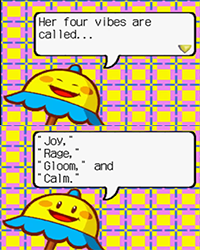
Same, Princess Peach. Same.
In the scheme of the Super Mario Bros. franchise, it takes less time to name all the games Princess Peach wasn’t kidnapped in than the ones she was. She is the poster child for the damsel in distress trope.
That said, Nintendo did take some baby steps with her over the years, starting first with the teeny-tiny Princess Toadstool's Castle Run on the Nelsonic Game Watch in 1990, and later in 2005 with Super Princess Peach.
While the Nintendo DS game focused more on her magic umbrella than it did the titular girl herself (introducing an emotion-based meter that was far from progressive), it did start to shimmy open the door for later, paving the way for additional spin-off appearances and, eventually, the big top: Princess Peach: Showtime! will mark her first starring role in a console game.
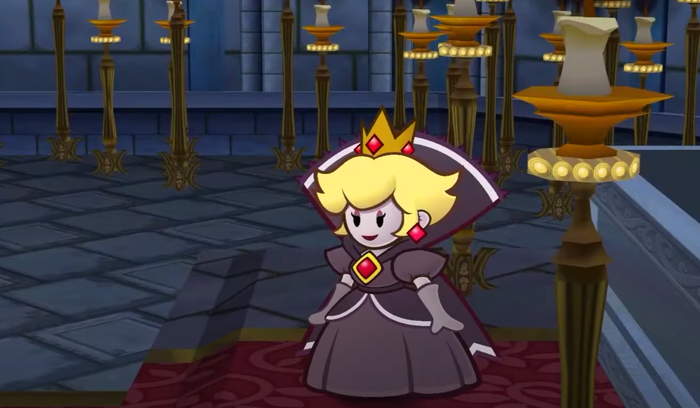
Image via Nintendo, courtesy of YouTube user BeardBear.
4. Paper Mario: The Thousand-Year Door: Princess Peach becomes the antagonist
As with Super Princess Peach, for a time, Nintendo seemed most content to build up a bigger fanbase for Peach by relegating some of her stories to handheld titles and the Paper Mario series, which both served as something of a testing grounds for the franchise’s riskier material. In the safety of Paper Mario: The Thousand-Year Door on the Wii, we saw Princess Peach at perhaps her worst: as the puppet of the villainous Shadow Queen, who uses Princess Peach’s body as a conduit for power in a final boss battle with Mario. While her time as an antagonist is brief, it’s also iconic for what it achieves. Not only is Princess Peach literally possessed by a demon queen, but she also has a serious Sandy Duncan moment, donning a high-collared cloak, blood-red jewels, and a dusky black gown to dramatic effect.
While short-lived, the outfit is arguably the best she’s ever looked. From girl next door to goth girlfriend. Princess Peach should get possessed by a demon more often.
5. Dr. Mario: Princess Peach gets a freaking job
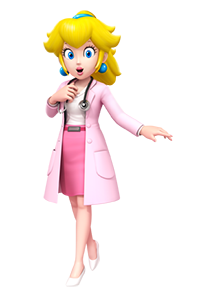
Image via Nintendo.
Admittedly, Princess Peach isn’t always the damsel in distress. Between Mario Golf, Mario Tennis, and Mario Kart, she is also a lady of leisure, competing in sports with her friends and enemies freely (at one point even participating in the Olympics!). In Dr. Mario, however, Princess Peach actually gets a job, eschewing her royal crown for a nurse’s cap and a supplementary role as Mario’s assistant. It isn’t a glamorous career, nor is it fulfilling; really, she just sort of stands there and smiles. But hey, a paycheck’s a paycheck, and Princess Peach needs to stop being a royal burden on the Toadstool Kingdom taxpaying system.
Perhaps sensing this, in the mobile title Dr. Mario World, she got a promotion to Dr. Peach, making her debut as a playable character. Meaning all those years toiling away in Mario’s office also led to a lucrative medical career. Good for her.
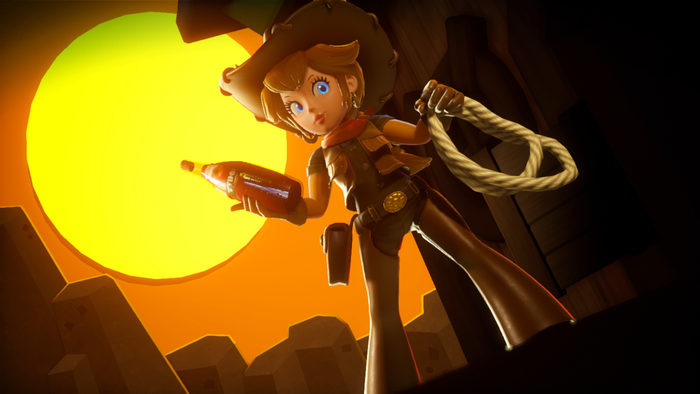
Image via Nintendo.
6. Princess Peach: Showtime!: Princess Peach gets a pair of pants
Princess Peach: Showtime! isn’t exactly the first time we’ve seen the old gal do a Susan B. Anthony: in the spin-off Mario Kart games, for example, she is seen in a jumpsuit rather than a skirt or dress. Showtime, however, is still a marked deviation from Princess Peach’s fashion history. Rather than depicting her in a stylized evocation of her traditional clothes, Peach is seen in several different outfits, each transformative and imbuing her with a different fighting style: Swordfighter, Detective, Patisserie, Kung-Fu, Ninja, and Cowboy. All of these factor heavily into the game’s marketing, boldly separating Peach from her most easily recognized features in favor of emphasizing her abilities.
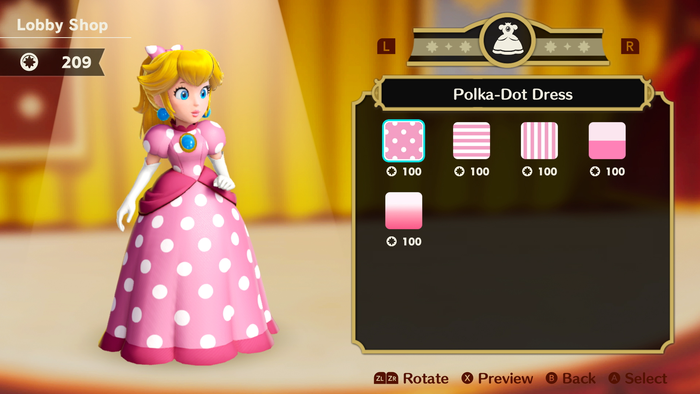
The game takes the new variation on Peach once step further by allowing custom patterns on her iconic dress. Image via Nintendo.
It’s a smart way to debut Princess Peach as a strong, individual character; after decades of reinventing her pink dress and blue jewels like so much Marge Simpson in Chanel, she’s donning whatever it takes to get the job done, be it a pair of slim-fitting sword fighting breeches or a pair of cowboy chaps. By placing this emphasis on form and function over traditional femininity, Peach is empowered to focus on her needs in the moment rather than conforming to the cohesive but limiting rules of her design: she can be anything she wants; she just needs the right clothes! In that sense, I guess she really is the Barbie of video games.
About the Author(s)
You May Also Like









